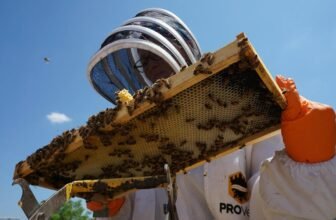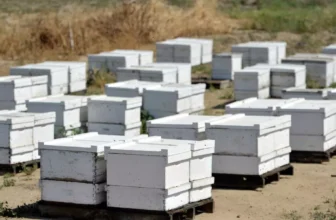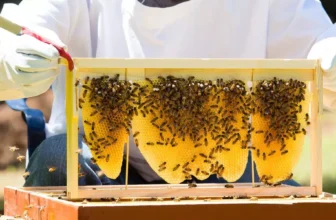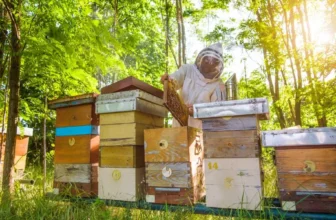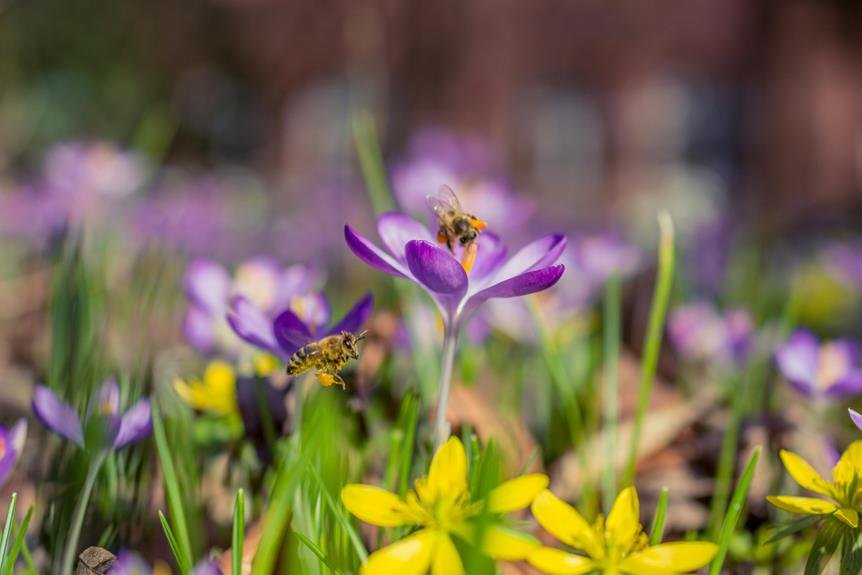
If you're wondering how to entice bees to your garden, there are a few key strategies that can help. From selecting the right plants to creating suitable habitats, attracting these essential pollinators is a rewarding endeavor. By employing thoughtful techniques and making your garden a haven for bees, you can witness the beauty of nature flourishing right in your own backyard.
Choosing Bee-Friendly Plants
To attract bees to your garden, select plants that provide nectar and pollen throughout the different seasons. Bees are attracted to a variety of flowers, so planting a mix of blooming plants will ensure a continuous food source for them. Spring-flowering plants like lavender, crocus, and hyacinth are excellent choices to kickstart the bee season. As summer rolls in, consider adding bee balm, sunflowers, and coneflowers to keep these pollinators buzzing happily. For the fall season, asters, sedum, and goldenrod are great options to provide bees with sustenance as the weather cools down.
When choosing plants, opt for native species whenever possible. Native plants have evolved alongside local pollinators and are well-suited to provide the necessary resources for their survival. Additionally, prioritize single-petal flowers as they offer easier access to nectar and pollen compared to double-petal varieties.
Providing a Water Source
Consider incorporating a shallow water dish or fountain in your garden to provide bees with a refreshing source of hydration. Bees need water not just for drinking, but also for regulating the temperature inside their hives. By offering a water source in your garden, you can attract more bees and support their overall well-being.
When setting up a water station for bees, opt for a shallow dish or basin with some rocks or pebbles inside. This will provide a landing pad for the bees, preventing them from drowning. Keep the water level low so they can easily access it without the risk of submersion.
Regularly refill the water dish, especially during hot and dry periods, to ensure the bees always have a reliable water source. Remember to place the water station in a sunny spot, as bees are attracted to warm water. With a simple addition like a water dish, you can help sustain bee populations and create a welcoming environment for these essential pollinators in your garden.
Avoiding Harmful Pesticides
By choosing natural and bee-friendly pest control methods, you can safeguard your garden and ensure the well-being of these important pollinators. Harmful pesticides not only pose risks to bees but also disrupt the ecosystem balance in your garden.
Opt for organic pesticides like neem oil, insecticidal soaps, or diatomaceous earth to target specific pests without harming bees. These alternatives are effective at controlling garden pests while being safe for bees and other beneficial insects.
Avoid using broad-spectrum chemical pesticides that can linger in the environment and harm bees through direct contact or by contaminating their food sources. If you must use pesticides, apply them in the evening when bees are less active, and avoid spraying flowering plants.
Additionally, regularly inspect your garden for signs of pests to catch infestations early and prevent the need for extensive pesticide use. By adopting these practices, you can create a bee-friendly environment that supports both your garden's health and the well-being of these essential pollinators.
Creating Bee Habitats
Enhance your garden's appeal to bees by strategically planting a variety of native flowers and providing suitable nesting sites. Native flowers are crucial for attracting bees since they've co-evolved with local bee species and provide the necessary nectar and pollen. Consider planting a mix of flowers that bloom at different times throughout the growing season to ensure a consistent food source for bees. Include flowers like lavender, coneflower, and bee balm to attract a diverse range of bee species.
In addition to planting bee-friendly flowers, create suitable nesting sites for bees. Leave some areas of bare ground for ground-nesting bees or provide bee hotels with hollow stems or holes for cavity-nesting bees. These nesting sites are essential for solitary bees that don't live in hives but play a vital role in pollination.

